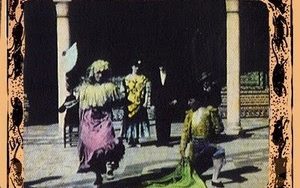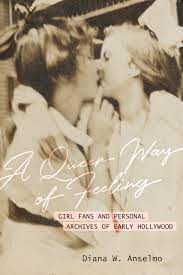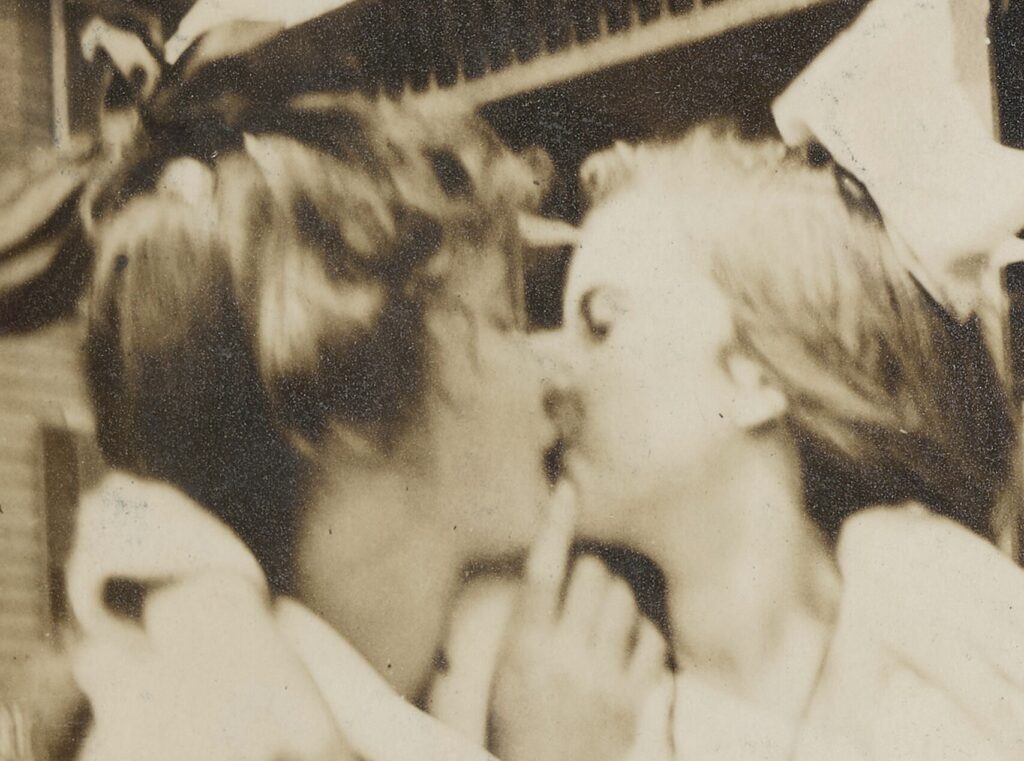Articles
Evidence to the contrary: matrimony & legal interventionism in silent divorce comedies
By Leslie H. Abramson
Excerpt: Comedies of legal uncoupling emerged at the turn of the century with such notable works as Why Mrs. Jones Got a Divorce (1900), Getting Evidence (1906), and later Max Wants a Divorce (1917). These and other early divorce films considered the catalysts, processes, emotional turbulence, and romantic fantasies of divorce even among loving spouses. In particular, the trio focuses on how processes of the law intercede in domestic cultural order. These silent comedies in essence document a conspiratorial alliance between legal interventionism and modern evidentiary technologies and methods – fingerprints, still photography, private detectives’ eyewitness records – instigating the dissolution of the couple. READ MORE
Music cultizing film: KTL and the new silents
By K.J. Donnelly
Excerpt: While there are distinct similarities between music and film as industries and cultures, there are also significant differences. Music culture is far, far more fragmented than film culture. This has been accelerated in recent years by the increasing possibility of extremely cheap music production and distribution – far cheaper than might be achieved by film. Every music genre has sub-genres and further divisions. This means that the spectrum from mainstream to hip obscurity is wider. In some ways this almost adds up to a reformation of what initially looks similar to so-called ‘elitist’ culture, pursued by aficionados who look down upon the more mainstream and popular manifestations and their ‘undemanding’ audiences. READ MORE
Buster Keaton special issue
with articles by Charles Wolfe, Peter Krämer, Susan E. Linville, Kevin W. Sweeney, Charles Wolfe, Joanna E. Rapf, Rob King, Sydney Duncan
Futurist images for your ear: or, how to listen to visual poetry, painting, and silent cinema
By Wanda Strauven
Excerpt: How to render the silent film audible and loud was not a question that was addressed in ‘Futurist Cinema’. When the issue of ‘sound’ was raised, it was clearly thought of in synaesthetic terms. Both musical tones and spoken words were transferred to the audience through vision, in the form of chromatic chords and cinematic analogies, precisely as took place in Marinetti’s free-word poetics and Russolo’s sound-painting: noise was ‘muted’, de-noised, in favour of a visual depiction. However, such visualization does not undo Futurism from its noisiness; instead it offers a new (synaesthetic) channel to tune our ears onto. READ MORE
THE CLASH BETWEEN THEATRE AND FILM: Germaine Dulac, André Bazin and La Souriante Madame Beudet
By Charles Musser
Excerpt: Dulac’s La Souriante Madame Beudet is, as we have seen, a film very much about ‘space oriented toward an interior dimension’. It takes the airless, claustrophobic, ‘uncinematic’ quality of theatrical space—the stage set—and subtly but profoundly alters it. Although Dulac somewhat expands the interior of the Beudet household to include the bedroom, the stairway, the hallway and other appendages to the house, she never gives us a full sense of the house and its activities. She never shows the kitchen and the maid preparing the dinner, for example. Outside the household, other interior spaces are shown but in the most schematic way possible. READ MORE
Stereotypes and archetypes in early Spanish Cinema
By Francisco Griñán Doblas

Excerpt: The most faithful film adaptation of the original Merimée novel was made by Belgian director Jacques Feyder. Feyder’s film Carmen was shot in Andalusia and other parts of Spain in 1926. Cameras rolled on this lavish production for nine months, including an extended bullfighting sequence shot in the bullfighting ring in Ronda. Feyder had numerous collaborators on the film, including the great surrealist film-maker Luis Buñuel. The lead role was played by the great diva of the era, Spanish actress and singer Raquel Meller, whose star turn was a monumental success, leading to a US tour and her face on the cover of Time Magazine. READ MORE
Reviews
Diana Anselmo’s A Queer Way of Feeling

By Angie Fazekas
Excerpt: A Queer Way of Feeling is thus a vital contribution to the complex intersections of queer history and fan studies, adding depth and nuance to our understanding of modern queer fandom practices. READ MORE
Essays in Cinema Sound: Rick Altman’s Silent Film Sound and Nasta and Huvelle’s New Perspectives in Sound Studies
By Marshall Deutelbaum
Excerpt: In ‘Sound rewrites Silents’, Alison McMahan takes up another of Altman’s ideas, how the history of film sound, once written, might entail the rewriting of received film history. She argues that although the various attempts to synchronize film and sound during the medium’s first two decades may have been commercial failures, the continuous attempt to achieve this goal had a hitherto unrecognized effect on the development of narrative film. For instance, it was the attempts at synchronized sound, as early as 1903, rather than editing, which created the narrative integration that marked the end of the cinema of attractions. READ MORE
Blog Features
Diana W. Anselmo and Maggie Hennefeld on A Queer Way of Feeling: Girl Fans and Personal Archives of Early Hollywood (UC Press, 2023)

